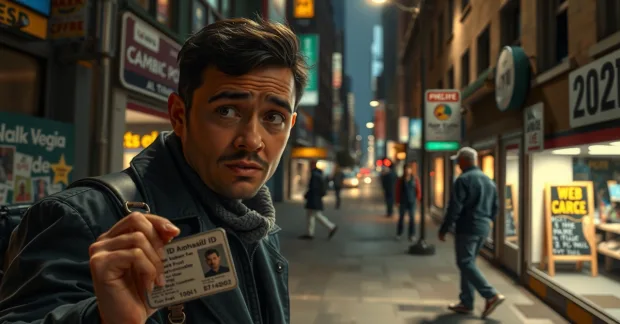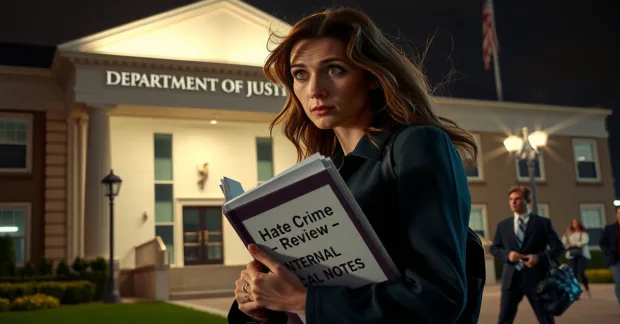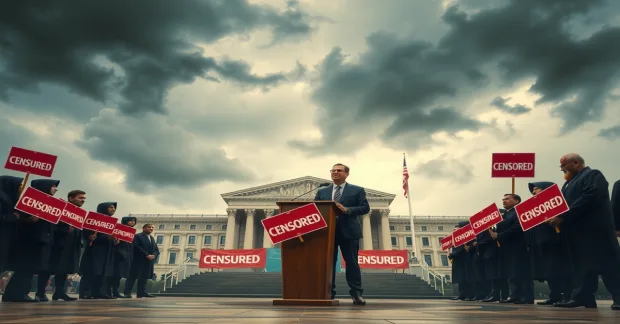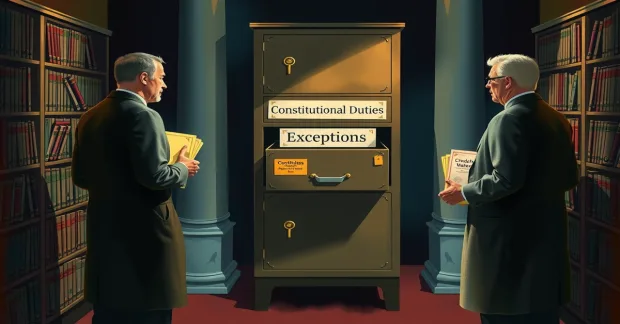
Prisoners face systematic erosion of constitutional protections the moment they are confined. They often lose voting rights, privacy, and access to adequate medical care. Shocking legal shields like the Prison Litigation Reform Act and qualified immunity block accountability. Ask yourself: what if the Constitution quietly stops protecting the imprisoned? This brief primer reveals dangerous gaps and paths for reform.
Key Takeaways:
- What if the Constitution stops protecting incarcerated people the moment prison bars close?
- Prison officials use vague “security” rules to curtail First Amendment rights.
- Fourth Amendment privacy nearly vanishes; cells, bodies, and mail face warrantless searches.
- Eighth and Fourteenth protections are weakened by “deliberate indifference” and minimal due process.
- PLRA, qualified immunity, and loss of voting or family contact make accountability rare.
The Historical Context of Prisoners’ Rights
Law and policy have swung between reform and retrenchment since the 1800s. How did legal doctrine permit this erosion? In the 1960s and 1970s, courts expanded inmate rights through cases like Cooper v. Pate (1964) and Estelle v. Gamble (1976). Then, starting in the 1980s and accelerating after 1996’s PLRA, courts narrowed remedies and procedural access. The result: over 1.8 million people today face a legal landscape that often reduces constitutional protections.
Evolution of Rights for Incarcerated Individuals
Courts once followed a “hands-off” doctrine, leaving prisons nearly unchecked. Activism and litigation in the 1960s forced legal recognition of inmate claims, as in Cooper v. Pate (1964). Later reversals and statutes shifted power back to administrators, narrowing protections. Who benefits when rights shrink?
Landmark Supreme Court Cases that Shaped Prisoner Rights
Key rulings set the balance between security and rights. Estelle v. Gamble (1976) established medical care standards and the “deliberate indifference” test for Eighth Amendment claims. Turner v. Safley (1987) created a deferential four-factor test allowing broad regulation when officials show penological interests. These decisions both expanded and limited protections.
For example, Estelle demands proof officials knew of serious medical needs and ignored them. Turner requires courts to assess restriction rationality using four factors: valid objective, alternative means, impact of accommodation, and absence of easy alternatives. Procunier v. Martinez (1974) once protected mail but later rulings narrowed that shield. Is this legal patchwork protecting victims or empowering administrators?
The Shift in Public Perception of Incarceration and Rights
Public attitudes hardened in the 1980s and 1990s, fueling mass incarceration. Prison population rose from roughly 300,000 in 1970 to over 1.8 million today. Then policy shifts and advocacy led to reforms like the First Step Act (2018). That change proves public opinion can reverse harsh criminal eras.
Grassroots campaigns and data-driven research shifted policy at state and federal levels. States like California passed measures such as Prop 47 (2014) to reduce sentences. Congress passed the First Step Act, and dozens of states now pursue sentencing reforms. Yet stigma and punitive narratives still block full restoration of rights for many. Will reforms restore full rights for the incarcerated?
Constitutional Protections: An Overview

In practice, the Constitution’s reach shrinks behind bars, with every Amendment filtered through security rationales. Courts rework rights under standards like Turner v. Safley and Estelle v. Gamble. Prisoners still hold rights, yet they face legal doctrines that prioritize order over liberty. Ask yourself: if judges routinely defer to wardens, who defends your speech, privacy, or medical care inside?
Understanding the U.S. Constitution and Its Amendments
The Constitution sets federal limits and assigns powers, with 27 amendments shaping individual rights. The First through Fourteenth Amendments form the backbone of prisoner rights litigation. Courts parse text, history, and precedent to weigh claims. Consider that the Fourteenth Amendment’s “due process” clause has produced conflicting rulings about what procedures prisoners deserve.
The Bill of Rights: Initial Protections for All Citizens
The first ten amendments guarantee freedoms like speech, religion, and protection from unreasonable searches. They include First, Fourth, Eighth amendments that most often arise in prison cases. Yet courts allow restrictions if officials claim legitimate penological interests. Ask: when does public safety become an excuse to strip basic civil protections?
Landmark doctrines show how rights are narrowed inside facilities. Procunier v. Martinez and later cases limited mail and press protections. Turner v. Safley created a deferential test that lets many restrictions stand. As a result, worship services, literature, and correspondence are frequently curtailed despite constitutional labels. Who pays the price for that judicial deference?
The Application of Constitutional Protections in Prison Settings
Prison law often substitutes administrative policy for constitutional safeguards. Courts weigh security, staffing, and budgets when reviewing claims. Estelle v. Gamble set the “deliberate indifference” test for medical care, raising the bar for victims. Ask: how can someone prove officials knew and ignored suffering?
The PLRA forces prisoners to exhaust internal grievances before suing, often blocking meritorious claims. Qualified immunity repeatedly shields guards from liability. Sandin v. Conner narrowed procedural protections for disciplinary isolation, enabling months of solitary confinement. With over 1.8 million people incarcerated, these legal barriers leave many without effective remedies. Who will stand for inmates when courts and agencies collapse into mutual deference?
The 8th Amendment: Protection Against Cruel and Unusual Punishment
Courts say the Eighth Amendment forbids cruel and unusual punishment, yet interpretation often narrows protections. Under the current test, prisoners must prove deliberate indifference to serious harm. How much suffering will we tolerate before labeling it unconstitutional?
Defining Cruel and Unusual Punishment for Inmates
Judges apply an objective and a subjective test to find Eighth violations. Objectively, harm must be serious; subjectively, officials must have known and ignored it. That dual rule lets cases like denied dialysis or prolonged psychiatric neglect face steep legal hurdles.
Notable Cases Interpreting the 8th Amendment
Estelle v. Gamble (1976) ruled that deliberate indifference to medical needs violates the Eighth. Farmer v. Brennan (1994) required proof that officials knew of excessive risks. Brown v. Plata (2011) forced population cuts after systemic medical and mental-health failures. Will these precedents protect today’s incarcerated?
In Estelle the Court framed medical care as an Eighth Amendment right, setting standards for treatment. Farmer involved a transgender inmate raped after officials failed to protect her, and it clarified the knowledge requirement. Brown v. Plata found California prisons operating at about 137 percent design capacity, linking overcrowding to preventable medical and psychiatric breakdowns.
The Reality of Living Conditions in Prisons
Overcrowding, understaffing, and budget cuts produce dangerous living conditions across many facilities. More than 1.8 million people are incarcerated, straining medical and psychiatric services. Tens of thousands endure long-term solitary confinement, worsening mental illness and suicide risk. Routine delays and violence compound physical and psychological harm.
Medical clinics routinely lack specialists, so appointments can be delayed weeks or months. Staff shortages trigger repeated lockdowns, cutting exercise and program access. Family contact and rehabilitation opportunities often shrink, raising reoffense risk. Yet these harms frequently fall short of the narrow legal standards needed for relief.
The 1st Amendment: Freedom of Speech and Religion Behind Bars

Prisoners keep First Amendment protections, but courts filter them through institutional security. Turner v. Safley (1987) lets officials restrict speech and association if rules are reasonably related to penological interests. Over 1.8 million people face this legal squeeze, so speech that exposes abuse or organizes reform is often labeled a threat. Who decides what speech is dangerous, and what happens when the system polices its critics?
Do Inmates Have the Right to Free Speech?
Yes, but the right is limited. Courts apply a Turner balancing test allowing restrictions tied to security and order. Procunier v. Martinez shaped mail rules, but later rulings narrowed protections. Prisoners have been punished for letters exposing corruption or reporting abuse. The Prison Litigation Reform Act adds hurdles before lawsuits proceed. Who protects speech that criticizes the very system that punishes it?
Religious Expression and Practice Among Prisoners
Religious exercise enjoys extra legal weight under the Religious Land Use and Institutionalized Persons Act (RLUIPA), which bars substantial burdens on faith unless authorities show a compelling interest and least restrictive means. Many incarcerated people rely on worship for stability and rehabilitation, and courts often must balance those benefits against security claims. Can a warden ban your prayer or religious headwear without facing strict scrutiny?
In practice, officials still deny requests for dietary accommodations, chaplain access, or religious clothing. Courts have upheld limits on group worship and religious materials when officials cite safety. Inmates report denials of halal or kosher meals, refusals of clergy visits, and bans on beards tied to faith. Legal relief under RLUIPA exists, but the PLRA and administrative hurdles make remedies slow and uncertain. These barriers turn protected worship into a constant legal battle.
Restrictions on Media and Communication for Inmates
Prisons routinely censor and monitor mail, phone calls, and incoming publications. Administrators ban materials deemed “disruptive,” restrict newspapers and books, and screen legal correspondence. Officials justify control with safety and order. Yet letters that report violence or corruption are often withheld as threats. If communication about abuse is labeled contraband, who hears the truth?
Facilities often require books to come from publishers, not families, and limit packages from loved ones. Phone calls may often cost over $1 per minute, making contact unaffordable. Video visits replace in-person visits in many places, raising privacy concerns. Legal mail carries protections, but staff sometimes open it outside inmate presence, delaying appeals or filings. These practical limits silence information and strain family ties behind bars.
The 4th Amendment: Privacy Rights in Confinement
Prison rules convert the Fourth Amendment into a flexible tool for officials. Courts often allow warrantless searches of cells under a broad security rationale. Ask yourself: if privacy ends at the cell door, what dignity remains? Over 1.8 million Americans face this lowered protection every day.
Understanding Search and Seizure in Prisons
Hudson v. Palmer (1984) set the precedent allowing warrantless cell searches. Bell v. Wolfish upheld invasive searches after contact visits for safety. Prisoners have little expectation of privacy in personal effects or cells. Courts apply a reasonableness test that almost always favors officials. Who decides what counts as a real security threat?
The Impact of Surveillance on Prisoners’ Rights
Prisons rely on constant CCTV, monitored calls, and screened mail. Calls are routinely recorded and messages scanned for contraband or threats. That surveillance is often omnipresent and can be used in discipline or prosecution. Ask yourself: how does this affect family ties and legal defense?
Private vendors often run communication systems and retain recorded logs. Those logs have been admitted as evidence in both disciplinary and criminal cases. Psychological studies link constant surveillance to anxiety, isolation, and reduced trust. A policy shift toward transparency and limits on data retention could protect rights.
The Balancing Act Between Security and Privacy
Courts weigh safety against privacy under Turner v. Safley (1987). That standard defers to prison administrators when policies are rationally related to security. Yet deference creates a legal gap where rights shrink without effective oversight. Ask yourself: does safety justify all intrusions on bodily and informational privacy?
Technology like body scanners and biometric tracking intensifies surveillance power. Officials cite riots, weapons, and drugs when expanding intrusive searches. Independent audits, judicial scrutiny, and clear retention rules can restore some balance. Prisoner advocates push for limited search scopes and transparent incident reporting.
The 14th Amendment: Equal Protection and Due Process

Courts promise equal protection and due process, yet prison practice often erases those guarantees. If equal protection means anything, why do prisoners face perfunctory hearings and restricted liberties? Federal law covers over 1.8 million people behind bars, and judicial standards routinely allow broad deference to prison officials. That deference turns constitutional language into rubber stamps. The result: procedural safeguards exist on paper, but practical protections are frequently minimal.
The Concept of Equal Protection for Incarcerated Individuals
Legal doctrine treats prisoners as “persons,” but courts balance rights against penological goals. As a result, access to parole, medical care, and visitation varies widely. Black people are incarcerated at roughly five times the rate of white people, illustrating how equal protection frays under confinement. Ask yourself: if the 14th guarantees equality, why does the system tolerate such disparities?
Legal Precedents Establishing Rights Under the 14th Amendment
Wolff v. McDonnell set basic due process for discipline, requiring notice and a statement of evidence. Turner v. Safley introduced a reasonableness test that favors prison security. Sandin v. Conner narrowed what counts as a protected liberty interest. Together these cases shape a landscape where rights exist, but courts often allow broad restrictions. The net effect: procedural rights erode under standards that prioritize order.
Wolff required advance written notice, an opportunity to call witnesses, and a written record of the evidence. Yet it denied a right to counsel in most disciplinary hearings. Turner asks whether a regulation is reasonably related to legitimate penological interests, a test courts apply with great deference. Sandin raised the bar by requiring an “atypical and significant hardship” to trigger due process protections. Consequently, long-term segregation and harsh sanctions survive frequent judicial review. The practical takeaway: judicial doctrine often protects administration over individuals.
Disparities in Treatment Across Different Demographics
Racial and mental-health disparities distort equal protection inside prisons. Research shows racial bias in sentencing, parole outcomes, and disciplinary punishments. Female incarceration rose more than 700% since 1980, and estimates suggest about half of incarcerated people face a mental health condition. If equality under the 14th is real, why are these gaps so persistent?
Studies document harsher discipline for Black and Latino inmates, and less access to quality medical and mental health care. Pregnant people are still shackled in some jurisdictions despite advocacy and policy changes. People with serious mental illness face higher rates of solitary confinement and untreated conditions. These disparities compound, producing outcomes that look like structural denial rather than incidental inequality. The core danger: systemic bias and limited remedies leave vulnerable groups most exposed.
Voting Rights: The Impact of Incarceration on Civic Participation — Who Counts as “We the People”?
Across the country, incarceration strips voting power from over five million Americans, while the prison population tops 1.8 million. States vary wildly: some end disenfranchisement on release, others impose lifetime bans. Consider Maine and Vermont, where people in prison still vote, versus states that require pardons. The result: entire communities lose political voice, and policies affecting them go unchecked. How long will we accept a system that sidelines so many from civic life?
States’ Laws on Voting for Felons and Inmates
State rules range from full in-prison voting to permanent loss of rights; Maine and Vermont permit ballots behind bars. Florida’s 2018 Amendment 4 restored rights to about 1.4 million people, then state laws required payment of fines and fees. Governors in some states have used clemency to restore rights to tens of thousands. These patchwork rules mean your voting fate can depend entirely on zip code and politics.
The Historical Context of Voting Rights Loss
Felony disenfranchisement grew after the Civil War and during Jim Crow, used to suppress Black political power. Southern states rewrote laws and imposed Black Codes to exclude former slaves from voting. This legal architecture cemented racial exclusion under a veneer of criminal justice, shaping modern bans and disparities.
Scholars link current disenfranchisement to those origins: laws targeted offenses common in policing of Black communities. The Sentencing Project documents disproportionate impacts on Black and Hispanic populations. Reformers argue these laws functioned as racial control tools, not neutral civic rules, and demand systemic fixes.
Efforts and Movements to Restore Voting Rights
Advocates, civil rights groups, and some governors press for change through legislation, litigation, and ballot measures. Major wins include Florida’s ballot initiative and state laws creating automatic restoration after sentence completion. Still, financial and administrative barriers persist, blocking many from reentry into civic life.
Legal fights now target fees, fines, and administrative hurdles that re‑disenfranchise people after release. Organizations like the ACLU, Brennan Center, and The Sentencing Project push for automatic restoration and federal protection. When reforms pass, they often restore political power to tens of thousands at once, proving change is possible.
Rehabilitation and Reentry: Rights and Resources
Rehabilitation and reentry policies shape whether incarceration becomes a path to stability or a pipeline back to prison. About 600,000 people are released each year, yet access to programs is uneven. Studies show correctional education cuts recidivism dramatically—a RAND meta-analysis found a 43% reduction—but those gains vanish when states or administrators deny participation.
Expectations for Rehabilitation in the Prison System
Prisons often promise rehabilitation but deliver patchy services tied to local rules. Eligibility can hinge on offense type, disciplinary records, or a warden’s choice. Programs may be discretionary, not guaranteed, and many facilities lack mental health or substance-abuse services at scale. If rights are conditional, who decides who gets a genuine second chance?
The Role of Education and Vocational Training
Education and vocational training are proven levers for change: Second Chance Pell (2015) expanded college access inside prisons, and the RAND study links correctional education to a 43% recidivism drop. Elite programs like the Bard Prison Initiative report recidivism under 4% among graduates, showing what sustained academic access can achieve.
Vocational tracks include apprenticeships, trade certificates, and tech training tied to employer needs. Registered Apprenticeship partnerships with the Department of Labor place people into trades. Research indicates participants are about 13% more likely to find employment after release, and certificate credentials often speed hiring by former employers.
Support Systems for Successful Reentry into Society
Reentry hinges on benefits, housing, and community support, not just willpower. Many people lose access to Medicaid, face housing bans, and need IDs to get jobs. Loss of Medicaid and housing prohibitions create immediate health and shelter crises. Who helps when benefits are cut at the cell door?
Effective reentry combines pre-release planning, transitional housing, and peer navigators. Reentry courts, halfway houses, and employer partnerships provide measurable help. The Bureau of Justice Statistics found about 68% of people are rearrested within three years, underscoring why coordinated, rights-based support matters to reduce returns to prison.
Employment and Housing Discrimination Post-Incarceration — Who Bears the Burden?

After release, people face a double barrier: job denials and housing exclusion. With over 1.8 million incarcerated and roughly 600,000 reentering annually, these barriers fuel instability. Employers run instant background screens and landlords enforce blanket bans. The result: shattered incomes, fractured families, and increased homelessness. Who pays the cost when society locks opportunity behind conviction records?
Legal Barriers to Employment for Former Inmates
State laws, occupational rules, and employer policies block access to work. Many professions require licenses that bar applicants with convictions. Automated background checks and blanket exclusions force employers to reject qualified candidates. Some jurisdictions adopted ban-the-box reforms in more than 35 states and dozens of cities, yet exemptions and loopholes persist. How long will a past conviction decide a person’s future?
The Struggle for Safe and Stable Housing
Public housing rules and private landlords often reject applicants with convictions, producing long-term displacement. Federal and local policies allow exclusion for certain charges, and screening software magnifies bias. Evictions and denial of housing push people into shelters or the street, raising safety and health risks. Who will shelter those deemed unacceptable by automated checks?
In 2016 HUD issued guidance challenging blanket bans on renters with arrest or conviction records, calling them potentially discriminatory. Despite that guidance, many housing authorities still use categorical bars that block reentry. Research links housing instability to higher recidivism and worse health outcomes, while stable housing dramatically improves success after release. Ending categorical bans can reduce homelessness and lower reoffense rates.
Advocacy Efforts for Fair Chance Policies
Grassroots and legal advocates push for ban-the-box, sealing, and individualized assessments. Dozens of cities, including San Francisco and Philadelphia, plus more than 35 states, now restrict early criminal-history inquiries. Expungement and automated sealing laws are expanding, restoring access to jobs and housing. These reforms shift power from automated exclusion to human review. Will policy follow evidence and open doors?
Local campaigns combine litigation, legislative change, and employer partnerships to create measurable gains. For example, city-level ordinances require individualized risk assessments instead of blanket bans. Clean hiring initiatives pair records relief with job training and placement programs. Where sealing and fair-chance rules expanded, employers reported improved retention and fewer barriers for returning citizens. Scaling these models could transform reentry outcomes nationwide.
Mental Health and Medical Care: Rights to Treatment
Prisons house an estimated 30–50% of people with serious mental health disorders, yet treatment access is wildly inconsistent. Courts require care under the Eighth Amendment, but prison systems often rely on understaffing, isolation, and short-term psychotropics. Estelle v. Gamble set the legal duty, while funding cuts and the PLRA make litigation difficult. Who gets timely, effective care—and who is left untreated?
Standards of Care for Mental Health in Prisons — Who Decides?
Standards come from entities like the NCCHC and SAMHSA, but adoption varies widely across states. Facilities accredited by the NCCHC generally meet screening, suicide prevention, and treatment benchmarks. Many prisons lack 24-hour psychiatric coverage, and jails often use short mental health evaluations. Solitary confinement still exacerbates symptoms and raises suicide risk. Who enforces these standards when budgets and custody priorities clash?
Medical Rights of Inmates Under the Law
Estelle v. Gamble established that denial of necessary medical care violates the Eighth Amendment. Courts use the “deliberate indifference” standard, requiring proof officials knew of serious need and ignored it. The PLRA forces grievance exhaustion and limits attorneys’ fees, reducing accountability. Plata v. Brown shows courts can order broad remedies when care is systemically failing. How can inmates enforce these rights against understaffed systems?
Litigants must show objective harm and officials’ subjective awareness to prevail. Courts often require medical records, expert testimony, and documented delays. The PLRA’s exhaustion rule forces months or years of internal appeals before federal court. Qualified immunity shields many officials from damages, leaving injunctive relief as the main remedy. Plata’s federal takeover of California’s health system illustrates how court orders can produce change when other remedies fail.
Advocacy and Reform for Inmate Healthcare
Advocates pursue litigation, legislation, and monitoring to expand care and accountability. Groups like the ACLU, Prison Law Offices, and NAMI bring cases and pressure agencies. Telepsychiatry expanded during COVID and now improves access in remote facilities. Many reforms focus on ending solitary for people with serious illness and on pre-release care planning. Who will fund sustained reform and ensure continuity of care at reentry?
Successful campaigns combine class-action suits, consent decrees, and state policy change. Plata and Coleman produced oversight and facility upgrades in California. Several states now suspend Medicaid rather than terminate it, easing reentry care gaps. Litigation remains slow, so legislative fixes and public funding are urgent. Will lawmakers prioritize treatment over punishment when lives are at stake?
The Role of Advocacy Groups in Protecting Prisoners’ Rights

Advocacy organizations use litigation, research, and public campaigns to expose systemic abuses. They represent inmates in class actions that can win relief for thousands. The work matters because the U.S. incarcerates over 1.8 million people. Yet legal barriers like the PLRA and qualified immunity often block meaningful accountability.
Key Organizations Fighting for Inmate Rights
ACLU, Equal Justice Initiative, Human Rights Watch, Southern Poverty Law Center, and Prison Policy Initiative lead major fights. EJI helped secure the Miller v. Alabama victory ending mandatory juvenile life without parole in 2012. Prison Policy Initiative supplies data used to push policy reform and media pressure. Who will speak for those stripped of basic legal protections?
Strategies Used by Advocates to Enforce Rights
Advocates pursue strategic litigation, class actions, and consent decrees to secure court-ordered reforms. They file FOIA requests, publish data-driven reports, and mobilize media to shift public opinion. Prisoner-led organizing and legislative lobbying produce policy changes at state levels. Landmark rulings like Brown v. Plata forced California to reduce extreme overcrowding to 137.5% capacity.
Litigators document patterns of harm to meet the high bar of deliberate indifference under Farmer v. Brennan. They secure independent medical monitors and court-appointed experts to enforce consent-decree compliance. Coalitions combine local counsel, national groups, and eyewitness reporting to survive PLRA exhaustion hurdles. This layered approach converts individual suffering into systemic legal claims that courts find harder to dismiss.
Success Stories: Impact of Advocacy on Policy Change
Landmark wins show advocacy works: Miller v. Alabama ended mandatory juvenile life without parole in 2012. Brown v. Plata forced California to address severe overcrowding and improve medical care. NGOs pressured states to limit solitary and reform parole, improving conditions for thousands. Will these gains hold against ongoing legal rollbacks?
After Miller, states opened resentencing hearings for hundreds sentenced as juveniles. Brown v. Plata affected tens of thousands and pushed California toward decarceration. Successful campaigns pair courtroom victories with sustained policy organizing, watchdog reporting, and legislative lobbying to lock in reforms. Those combined tactics turn isolated wins into broader protections.
The Influence of Public Opinion on Prisoners’ Rights
Public fear and pity shape policy behind the walls. Over 1.8 million Americans are incarcerated. Media narratives and political rhetoric often prioritize punishment over rights. Who benefits when public fear trumps legal rights? This tidal pressure lets officials restrict access to visitors, mail, and meaningful medical care.
The Media’s Role in Shaping Perceptions of Inmates
News outlets and true crime shows amplify violent stereotypes about the incarcerated. Sensational headlines focus on rare horror cases, not systemic issues. Whose voice is missing when victims become villains? Local papers often omit trauma histories, addiction, or poverty. The result is fear-driven narratives that fuel harsher prison policies and public indifference.
Navigating the Politics of Punishment and Reform
Politicians win votes by promising tougher sentences and zero-tolerance policies. The 1994 Crime Bill institutionalized many mandatory sentences. Reform faces uphill battles against law-and-order messaging. Who pays the price when people lose their rights for headlines? Advocates must counter with data and human stories. Policy choices shape daily life inside every prison.
States that shifted budgets toward community supervision cut prison populations while maintaining public safety. Texas and New Jersey offer examples of reduced incarceration through diversion and reentry programs. Parole reform, sentencing review boards, and counsel access produced measurable declines in recidivism in some jurisdictions. Activists use case studies and cost analyses to persuade lawmakers. Political will, not just evidence, changes prison policy.
How Public Sentiment Drives Legislative Action
Public outrage creates demand for new laws, often harsher sentencing and mandatory minimums. Media storms and high-profile cases kickstart legislative sessions. Do angry headlines shape law more than facts? Legislators respond to perceived risk and voter pressure. The result is fast laws that strip rights without careful review.
Reforms like California’s Proposition 47 (2014) and the federal First Step Act (2018) show public pressure can produce change. Grassroots campaigns, family advocacy, and cost reports shifted voter opinion in multiple states. Lawmakers often act after polls show public support for reform or punishment. Strategic mobilization turned outrage into policy wins for release, relief, and rehabilitation. Organized constituents can reverse punitive trends.
The Future of Prisoners’ Rights in America
Policy fights now decide whether the Constitution will protect the more than 1.8 million people behind bars. Who will press courts to limit abuse, and who will accept status quo erosion? Expect continued battles over solitary confinement, healthcare, and voting restoration as states and Congress weigh reforms. Advocates push litigation, legislation, and public records campaigns to force transparency. If momentum holds, small legal shifts could reshape daily life inside prisons and begin reversing decades of legal narrowing.
Trends in Legislation Affecting Inmates
Federal and state bills now nudge modest change: the First Step Act expanded earned credits at the federal level, while states vary on voting rights and confinement rules. Courts still rely on Turner v. Safley and Estelle v. Gamble standards to limit rights. Some legislatures ban shackling pregnant prisoners or limit indefinite solitary confinement. Meanwhile, the PLRA and qualified immunity keep many abuses insulated from accountability. Who benefits from incremental fixes, and who remains exposed to institutional power?
The Importance of Ongoing Awareness and Advocacy
Nonprofits and journalists force cases into public view, and high-profile lawsuits sometimes win relief for groups of inmates. ACLU, Prison Policy Initiative, and local legal clinics use public records and class actions to expose neglect. Persistent advocacy produced measures like Florida’s 2018 ballot change, even if legislators later limited its effect. Without sustained pressure, reforms stall and courts defer to officials claiming security.
More intense organizing means targeted legal strategies, strategic media campaigns, and voter mobilization to change state law. Grassroots coalitions fund legal defenses, track disciplinary data, and push for legislative amendments. Litigation often runs into the PLRA exhaustion requirement, so advocates combine lawsuits with policy lobbying. Effective campaigns also back reentry programs that reduce recidivism and humanize imprisoned people to skeptical lawmakers.
Potential Reforms and Their Implications
Proposals range from banning prolonged solitary confinement to restoring voting rights and narrowing mandatory minimums. Ending or amending the PLRA and limiting qualified immunity for corrections staff are on reformers’ lists. The UN’s Mandela Rules say confinement beyond 15 days can be torture, a standard reformers cite. Each policy shift alters power dynamics inside facilities and affects post-release civic reintegration.
Concrete impacts include lower incarceration costs, fewer violent incidents, and reduced recidivism when humane policies replace punitive ones. For example, earned time programs can shorten sentences and incentivize rehabilitation. Yet rollback risks persist: weak oversight, limited funding, and judicial deference can blunt reforms. Strong monitoring, independent audits, and community oversight are imperative to make reforms meaningful rather than symbolic.
Summing up
Considering all points, the Constitution’s promise falters for prisoner rights as legal interpretations permit profound loss of rights. What if you or a loved one were stripped of privacy, medical care, or fair process? Advocates must push for enforceable protections, transparent oversight, and equal treatment under law.
FAQ
Q: What constitutional rights do prisoners actually lose? Ask yourself: would your rights vanish behind bars?
A: Convicted people often lose voting rights and firearms rights permanently in many states. Privacy rights in cells, mail, and phone calls are severely diminished. First, Fourth, Eighth, and Fourteenth Amendment protections are narrowly interpreted under prison law. PLRA and qualified immunity block many valid complaints. This legal reality should alarm anyone who cares about justice.
Q: How does the First Amendment change inside prison walls? Who decides what speech threatens ‘security’?
A: Free speech, religion, and petition rights survive only under “institutional security” tests. Prison administrators limit sermons, literature, and protests when they claim order is at risk. Inmates can be punished for exposing abuse or organizing collective action. Ask yourself: who enforces the rule when rules protect the rulers?
Q: Can prisoners expect privacy or protection from searches? If privacy ends, does dignity disappear too?
A: The Fourth Amendment is heavily curtailed inside prisons in the name of safety. Wardens can search cells, bodies, and mail without warrants or probable cause. Electronic monitoring and censored correspondence strip many prisoners of basic privacy. This loss of privacy undermines dignity and family bonds for incarcerated people.
Q: How effectively do the Eighth and Fourteenth Amendments stop abuse? Would you accept ‘deliberate indifference’ as proof of harm?
A: The Eighth forbids cruel and unusual punishment, but courts require “deliberate indifference.” Proving knowledge and intent by officials is nearly impossible for many incarcerated plaintiffs. The Fourteenth offers due process, but hearings are often cursory and unfair. Solitary confinement, medical neglect, and abuse persist despite constitutional language.
Q: What legal barriers stop prisoners from winning justice? Imagine having to exhaust biased systems before any real hearing.
A: The Prison Litigation Reform Act forces exhaustion of internal remedies before filing federal suits. Qualified immunity shields many officials from accountability even after abuses are proven. Courts often dismiss prisoner claims as frivolous or procedurally defective. This system keeps suffering hidden and harms unredressed for vulnerable people.



















